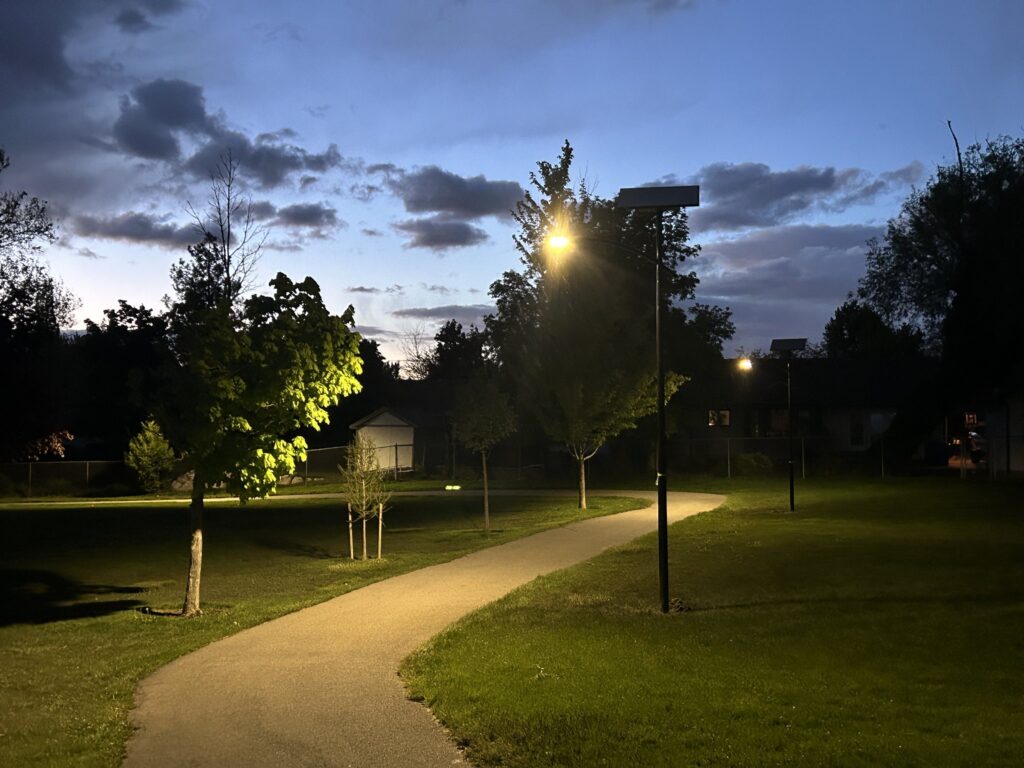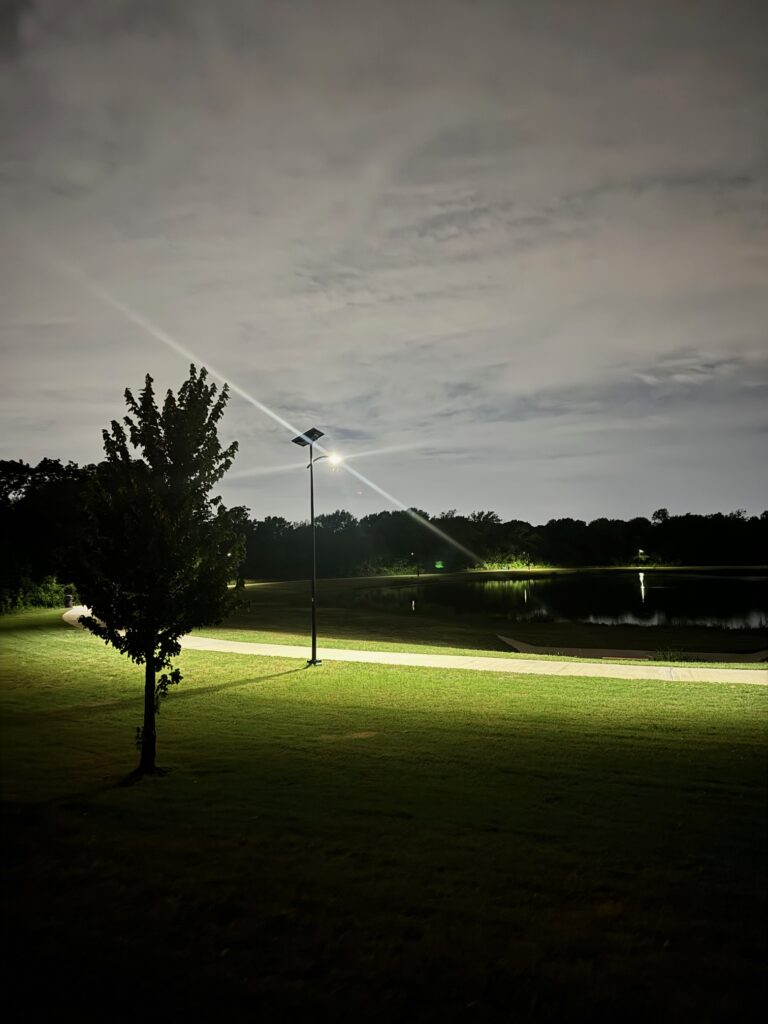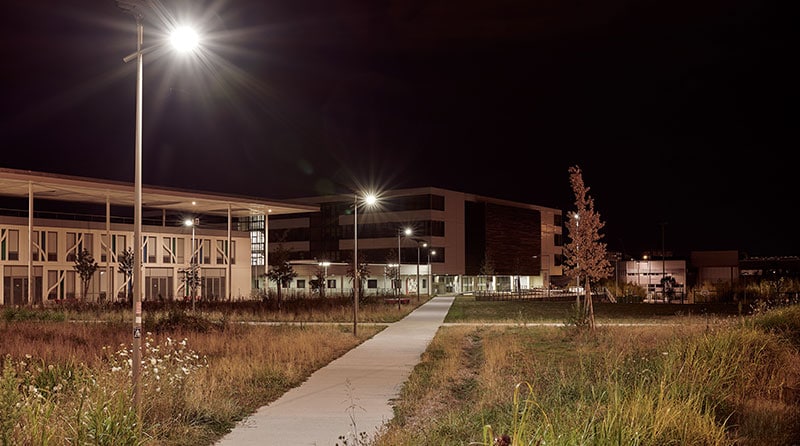Why Lighting Lifespan Matters More Than Ever
Lighting doesn’t just illuminate public spaces—it extends access, improves safety, and demonstrates a city’s investment in its people. But as infrastructure leaders look beyond initial installation costs, one question keeps coming up: how long will it last?
For grid-tied lighting, the answer is more complicated than most anticipate. Between trenching, transformers, and wiring, there are multiple potential failure points—each with its own maintenance schedule, cost, and risk. Add in rising utility rates, copper theft, and the growing strain on local power grids, and it’s clear that “business as usual” often means paying more to get less reliability over time.
That’s why more cities, tribes, and developers are reevaluating how they measure performance. It’s no longer just about lumen output on day one—it’s about long-term resilience, cost stability, and uninterrupted service.
Fonroche’s grid-free lighting systems are designed around that reality. With zero connection to the grid and no underground wiring, they eliminate many of the failure points that shorten the lifespan of conventional systems. More importantly, they deliver consistent, high-performance light—every night, for years—with no scheduled maintenance.
Table of Contents

How Grid Infrastructure Creates Hidden Costs
When budgeting for a new lighting system—especially in parks, trails, and public pathways—it’s easy to focus on upfront installation costs. But grid-tied lighting comes with ongoing financial and operational burdens that aren’t always visible in the initial quote.
First, there’s trenching. Bringing electrical service to a park or path often means cutting through pavement, landscaping, or protected green space. Then there’s conduit, cabling, electrical panels, and connection fees—not to mention restoration work after utilities are installed. These costs add up quickly, especially in sensitive or remote areas.
Once installed, grid lighting requires regular maintenance: underground wires can corrode or get damaged, transformers need inspection, and each component introduces another potential point of failure. In many cities, even routine repairs are delayed due to overloaded utility crews or parts backlogs—leaving public spaces dark for weeks at a time.
And then there’s the energy itself. While each light may only draw a few hundred watts, over a 10-year span; those monthly electricity bills add up. That’s money going to the utility every month—forever.
By contrast, Fonroche Lighting avoids all of these traps. With no connection to the electrical grid, you eliminate trenching, wiring, and electric bills entirely. It’s a solution built not just to perform—but to remove recurring costs from your operating budget for the next decade and beyond.
What Makes Grid-Free Lighting Last Longer
Fonroche grid-free lighting systems are engineered for infrastructure-grade performance from the ground up. Every element—from solar panels and batteries to LED fixtures and structural components—is selected and configured to operate autonomously for a decade or more, without scheduled maintenance.
At the heart of the system is Power 365, Fonroche’s proprietary energy management platform. Developed specifically for solar lighting, Power 365 ensures that each unit stores and delivers the right amount of energy every night, even through winter storms, extended cloud cover, or regional weather anomalies. Unlike grid-tied lights, these systems are completely independent—no outages, no voltage drops, no reliance on aging substations or third-party utilities. The result? A lighting system that works every night—not just when the grid does.

The Long-Term Impact for Cities and Communities
When you remove the burden of ongoing maintenance, outages, and energy costs, the value of lighting becomes clearer—and more impactful.
With Fonroche Lighting, parks and pathways stay lit no matter what’s happening with the local grid. That’s critical in areas prone to storms, heat waves, or wildfires, where power outages are becoming more frequent. It also means lighting continues to support walkability, safety, and access in neighborhoods that often wait the longest for infrastructure repairs.
Over time, these benefits compound. Cities avoid not just the cost of trenching and electric bills, but the administrative overhead of service calls, emergency repairs, and utility coordination. Planners gain flexibility to light more areas—sooner—without waiting on grid capacity or permit approvals.
And because each system is designed to last more than a decade with no scheduled maintenance, the total cost of ownership is significantly lower than grid-tied systems. For communities balancing limited capital with long-term public benefit, that kind of reliability isn’t just efficient—it’s transformational.
Ready to Plan for Long-Term Lighting?
If your city is looking to reduce maintenance, eliminate trenching delays, or build more resilient public spaces, Fonroche Lighting deserves serious consideration. Let’s talk about a solution that outlasts the grid.

